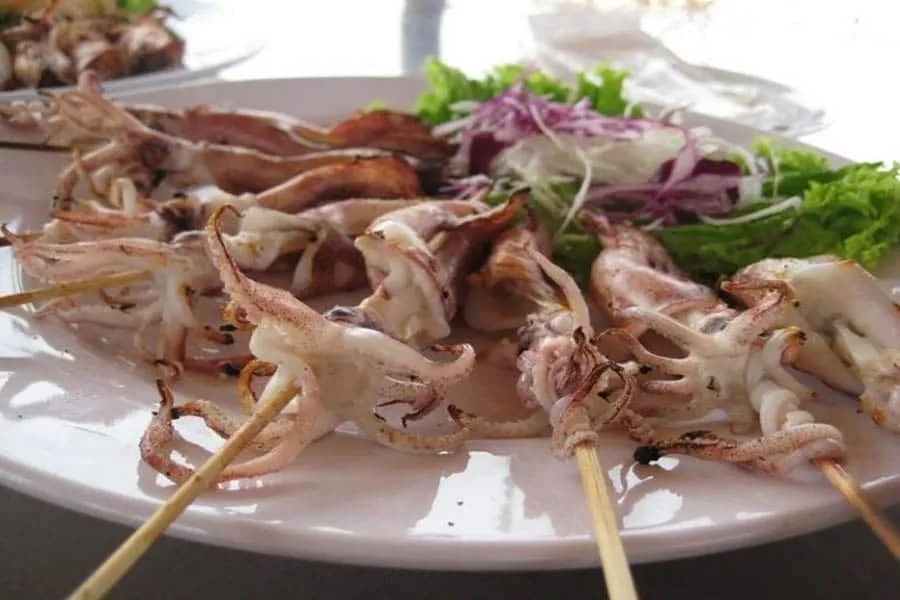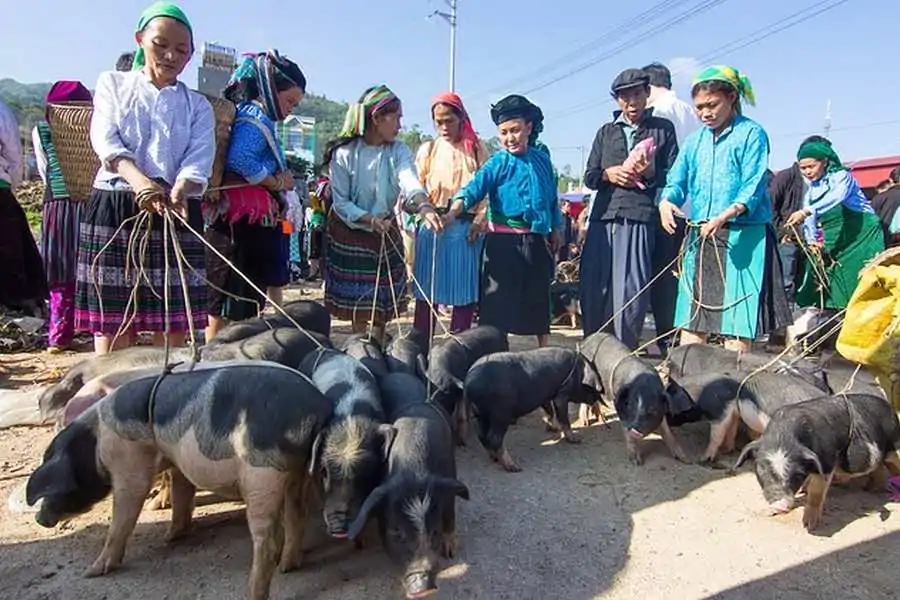At the end of the “Golden Spoon” Contest, the professional judge who is generally referred to as the King of folk cuisines proudly stated that: “(I) have managed to preliminarily synthesize the map of spices in Vietnam!”
“I have already sensed that waft of stunning aroma…”
“A pharmacy that is thousands of kilometers long”
That is the term Dr. Luong Le Hoang used to describe Vietnamese culinary treasure. No matter where it is in the mountainous areas or the most distant seas, Vietnamese dishes are always the so-called “medical food” which is not only delicious but also efficacious as a remedy. Perhaps, this finding is not a big surprise considering the substantial knowledge acquired from thousands years of experience of our ancestors.
According to Mr. Chiem Thanh Long, almost every spice used in Vietnamese cuisine proves to be healthy. In other words, Vietnamese dishes are specifically famous for their impressive balance between yin and yang or between heat and chill.
“It is fair to say that in our country, every home garden is a treasure of spices, not to mention the secluded highlands or remote deep pools on which lie human footprints. Interestingly, in most countryside village that we have been to, just going around the garden is far enough to find out all spices that you need.
Additionally, spices used by our brotherly ethnic groups are now becoming the key secret of Vietnamese chefs.
The “pharmacy of Vietnamese spices” not only consists of ample traditional ingredients but also is enriched by exotic herbs. During the development of culinary culture and the adaptation to customers’ tastes from various regions in the world, the chefs make effort to invent a complete new culinary style by combining imported seasonings with the local ones.
“This trend is inevitable, nonetheless, our traditional dishes advisably remain Vietnamese originality; hence, approaches to global taste should serve to take Vietnamese cuisine to a brand new heights. Nowadays, as a result of the interfering culinary cultures, we eat dairy cheese in French style, Indian curry or Chinese pork marinated with 5 spice powder.” – said Mr. Long.
Mr. Chiem Thanh Long is able to name an endless series of seasoning herbs such as coriander, cinnamon, perilla, etc. Furthermore, seasoning herbs in Vietnam are usually fresh and abundant in natural habitat which is easy to find, easy to use but rather difficult to preserve. In other countries, on the contrary, spices are treated to become dry so that they can be preserved for long or be carried elsewhere.
Apart from herbs, the spicy mix characterizing each region and each individual chef also astonishingly varies. Vietnamese chefs prefer to blend spices in their own inventive styles which generate unusually unique tastes. It can be even more fascinating in case the chef has experienced diversifying cooking styles from various regions.
“Nowadays, chefs can easily gain access to the global culinary culture which urges them to devise exclusive blends of spices. One of them is to utilize the available source of tropical fruits in order to create a stunning flavor. Every time I participate in “The Golden Spoon”, it is rather easy to notice very unusual mixtures: sauce from passion fruit or coriander sauce, etc.” – said Mr. Long when he was showing a bottle of oyster sauce from Con Dao.
However, it is still an on-going debate whether the prosperity of sauce in Vietnam is a pro or a con in our culinary integration. But it is apparent that the connection between sauce and spices is really undisputed.
Seasonings are marinating ingredients to add flavor to the dish and determine the nature of that dish. Otherwise, sauce is a combination of some spices to further boost the flavor of that dish (though it is optional).
Particularly in Vietnam, sauce serves as an adjustment and supplement to the main flavor of the dish, sometimes used to enhance or diminish the flavor. Hence, sauce needs to be used appropriately to make the dish more delicious and flavorful.
Like it or loathe it, sauce seems to be indispensible in Vietnamese cuisine. Each dish requires a specific type of sauce. Otherwise, it will be 50% less delicious.

Source: Tran Nguyen
Below is the map of spices drafted by Mr. Chiem Thanh Long after many years of investigating:
+ The Northwest (Lao Cai, Dien Bien, etc.): cardamon, cinnamon, coriander, chili, pepper and a regional spice called “mac khen”.
+ The Northeast: lemongrass, chili, galangal, turmeric, ginger, honey and a regional seed called “hat doi”.
+ Hanoi: cumin, “xuong song” leaves, mugwort, galangal, turmeric, pepper, garlic, chili, citronella, lemon leaves.
+ The Red River Delta: guise leaves, “mac cop” fruit, “chay” fruit, galangal, citronella, chili, pepper.
+ The North Sea: pepper, citronella, chili, galangal, “rieng me”, shrimp sauce, cumin, lemon leaves, mugwort.
+ The West Highlands: “e” leaves, citronella, ginger, salt, forest pepper, chili.
+ The North Central (Nghe An, Ha Tinh, etc.): pepper, garlic, fish sauce, salt, pepper, soy sauce.
+ The South Central (Hue, Da Nang, etc.): garlic, ginger, galangal, pepper.
+ The Southeast: garlic, pepper, ginger, citronella, chili, “chuc” herb, fish sauce, salt.
+ The Southwest: garlic, pepper, ginger, fish sauce, salt, lemon, chili.
 Tuan
Tuan April 25, 2019
April 25, 2019 News
News
 993
993 YOU MAY ALSO LIKE
YOU MAY ALSO LIKE
 read more
read more
